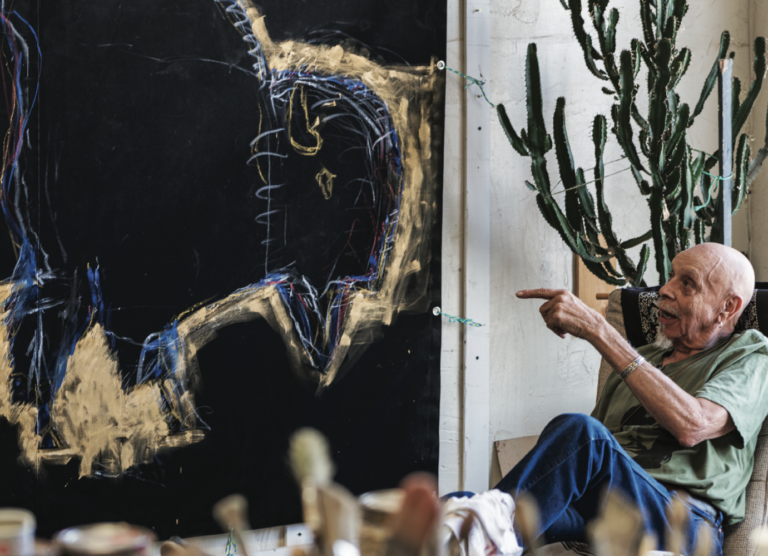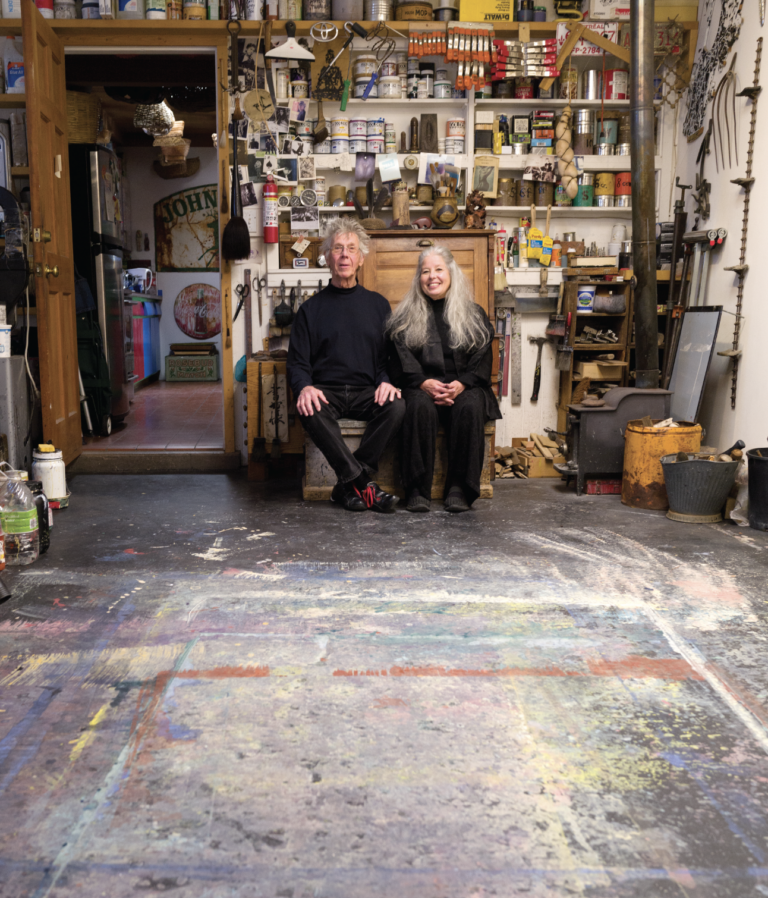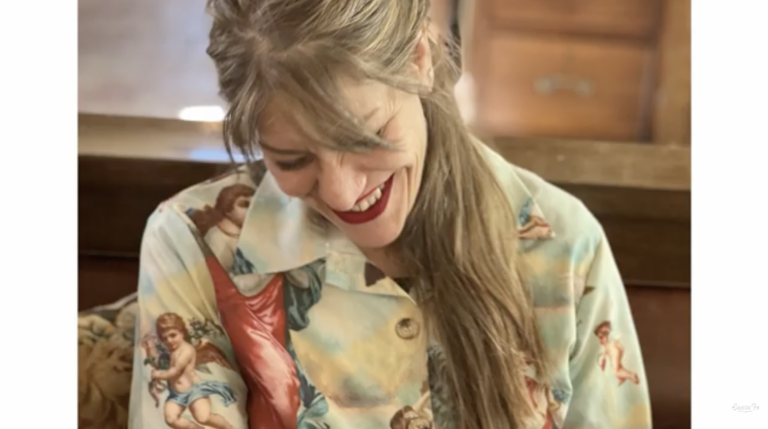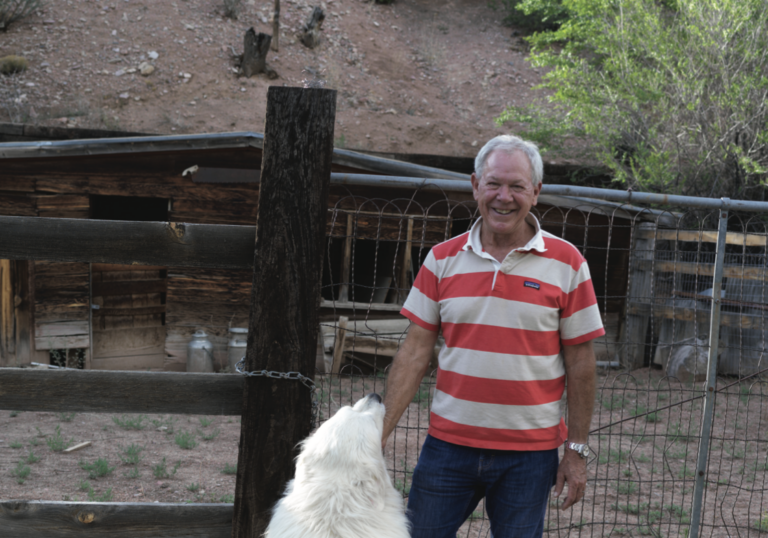IN GENERAL, IT IS NOT THAT COMMON to walk into a Santa Fe office and have someone tell you that they had an encounter with a fer-de-lance pit viper while in Honduras, searching for a lost city. That happened to me when I met Doug.
It’s not necessarily that he’s brave – although he may be that – but it is inarguable that he is ferociously curious and loves adventures. He is an author of an astonishing range of books – fiction, nonfiction, radical reports – and his writing has taken him to a wide range of Neverlands. Was Pan eternally young because he loved adventures or did the adventures keep him eternally young? Who cares?
In your book The Lost City of the Monkey God, you write about the discovery of a city. That is one of the great adventure stories I’ve ever heard.
You know, I guess I never grew up. I’ve always been interested in adventure, finding lost cities, exploring Egyptian tombs, dinosaurs, and things like that. And I found a way to actually make a living reporting on stuff like that.
The lost city thing was serendipity. I was at the Jet Propulsion Laboratory for National Geographic speaking to Ron Blum, an expert in remote sensing of the earth from space. He mentioned offhand that he was moonlighting for this guy looking for a lost city, and then he said, Oops. I shouldn’t have mentioned that.
I jumped on it. Steve Elkins, a filmmaker in LA, had heard about this legend of The White City, La Ciudad Blanca, supposed to be in the Mosquitia Region of Honduras, the thickest jungle in the world. They were analyzing satellite and synthetic aperture flyover imagery of these areas to try to find if there was something in there.
I immediately went down. All of the imagery took a while to process because it was Honduras, but oh my God, you did not have to be an archaeologist to see the pyramids, the mounds, terracing, the canals, the roads! It was like, Holy shit, they really did find a lost city! So I called up The New Yorker and did a story about it. That turned into the book.
While down there, we found a cache of these objects at the base of the pyramid. When they excavated, they found over 500 objects, beautiful statues of jaguars, vultures, monkeys, some giant stone urns and so forth. They all appeared to have been ritually broken at the time the city was abandoned around 1500.
The White City is incredible, truly a lost world. It’s in a valley ringed by mountains. There’s only one notch in the valley where you can enter the city, so it was like a refuge.
The theory is that the city was swept with European disease because the Spanish were slave trading in the area. They experienced a tremendous mortality rate – probably 90% – and they abandoned it. There are still surviving legends of the Indigenous people that say the gods became angry at them and sent disease. Anyway, they all finally had to leave.
And it’s still full of contagion – 60% of the expedition came down with leishmaniasis, infection from sandflies. And we were only there for nine days.
What was the jungle like?
We arrived by helicopter on the banks of this gorgeous river, with crystal clear water. The sun was shining. There were no bugs. There were flowers in the jungle. I looked around and I said, This is paradise!
Then the sun fell, the night came, and the sounds began. And that was when we saw this giant snake coiled up right in our camp, aroused, in striking position. It was bigger than a person! It was the fer-de-lance, the most poisonous snake in the new world. It had huge one-inch fangs seeping with venom.
It was a beautiful looking creature, especially at night. Not camouflaged at all. The patterns on it, the glossiness of it, the eyes that were looking right at you, the tongue going in and out.
There was a tragedy in killing that snake. But the head of our expedition killed it. And that was quite a fight. It was terrifying. He was an ex British SAS officer, very experienced in the jungle. When he saw it, he said, I’m gonna move that snake.
So he cut this eight-foot-long snake stick: a pole that he found with a fork at the end. The snake is still coiled up in striking position. He pinned the snake with the stick and it exploded in fury, lashing about, striking everywhere.
There were literally streams of venom arcing through the air and he worked the stick up behind its head, grabbed it. It was twisting around and expelled venom all over the back of his hand. It looked like his skin was bubbling.
So the snake is whipping about so strongly it almost knocks him over. Then he falls to the ground with it, pins it with his knees, and cuts its head off!
But that wasn’t the end of the fight. The head kept snapping and spewing venom. He had to stab it right through the brain into the ground. And then the headless snake kept whipping about. It was crazy. When it was all over, he washed his hands and he said, Nothing like that to concentrate the mind, is there?
You have astonishing adventure stories.
I feel thrilled to be able to do something like this in the 21st century when it seems like all the mysteries have been solved, all the unknown places have been found, the earth is shrunk, there’s no more excitement, no adventure. There are still wonderful things to be discovered. And there’s still that boy in me who loves the adventure of it all. Of course, the information, the archaeological value of it, the significance of it, that’s all important. But there’s still this very boyish part of me that’s like, Oh man, we’re having an adventure!
Do you ever feel like when you look at people, say, over 60, that there are two types: the one where it’s not hard to imagine the boy inside and the other who is nearly unrecognizable as a boy?
I think that’s true. If you look at the really great geniuses like Einstein, Murray Gell-Mann, Mark Twain, or Mozart, there’s a sense of boyish wonder and surprise at the world that never faded. Einstein is a shining example of this – even as an old man with the wild white hair, he had this boyish innocence, this wonder, this thrill at this incredibly interesting, bizarre world that we live in. Everyone has that as a child because they’re just seeing things for the first time. But so many people lose it as they get older.
How did you end up here?
When I was a kid, my parents sent me to this camp in Thoreau, New Mexico called Cottonwood Gulch. Martin Heinrich was director of that camp, way before he became a senator.
I loved it! I just loved being out in the west.
Later, I was living in New York City. I had this girlfriend. We both had very good jobs, working for a British publishing company. She was managing editor of Chocolatier magazine. We both wanted to be writers, and one day, she said, Let’s have a mutual suicide pact. We’ll both quit our jobs on the same day so that no one chickens out, and we’ll load up our shit and we’ll move somewhere and we’ll write and we’ll see if we can make it.
We decided on Santa Fe. We came, and I absolutely loved it.
Why did you love it?
I felt like I had come home. I don’t know. The atmosphere, the Indians, the landscape, the desert. And she hated it. And we had no money. We were so poor, impecunious. And so she said, This Santa Fe is bullshit.
She wanted to write for television: MTV, Disney. Then, a year after or two years after she left, she called me and said, I just got my brokerage statement and I’m a millionaire. How are you doing?
I said, Well, I don’t have any money.
But I still loved it. Santa Fe is a very small place and has an outsize personality. It’s fascinating, beautiful. It’s a genuine place. It’s not a fake place. Thank God that the vernacular architecture of this town was preserved.
And, for some reason, it has attracted all these interesting people – the density of fascinating people in Santa Fe is as high as it could be. And you meet them all. I’m meeting you, and if you and I lived in New York City, it’s very unlikely our paths would ever cross.
This is what I love about it as a writer. It has this wonderful feeling of being a crossroads of art, music, literature, cultures, languages.
You’re participating in the Santa Fe Literary Festival.
This is a perfect place for a literary festival because storytelling in New Mexico goes back 13,000 years, to the time when the Clovis hunters were killing mammoths, eating them, and sitting around the fire talking about the hunt. It’s something to kill a mammoth. I’m sure that that’s where the storytelling began.
Plus we have such a strong tradition of Indigenous and Hispanic storytelling. And look at how many writers came to this little town in the ’20s. It just seems like a perfect thing to have a literary festival here.
One of the reasons why I have become involved in supporting the Santa Fe Literary Festival is that I’m also the president of the Author’s Guild, which is America’s oldest and largest association of journalists and authors. Every Nobel Laureate in English has been a member except for Bob Dylan. I’m the first President from New Mexico. It used to be a New York–based organization, but it has now really become national.
Writing is a lonely profession. It’s an isolating profession. To be in a place where you can meet other writers, mingle with them easily, no difficulty getting together is really great. It makes you understand why you’re doing this.
Learn more at SolsticeProject.org
Photo SFM








